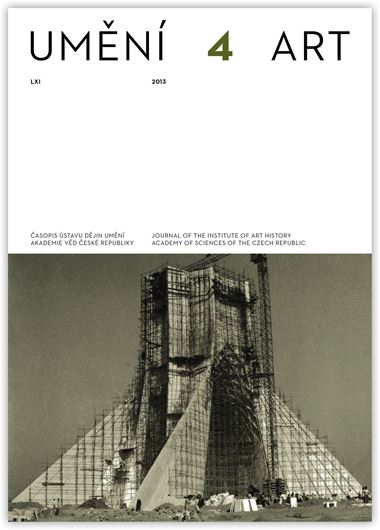Tomáš Winter
Ernst Ludwig Kirchner’s ‘Negerplastik’ and the Mistake of Czech Cubists
The article focuses on a sculpture, whose whereabouts are now unknown, that was captured in a photograph from 1912–1913 of the studio of Ernst Ludwig Kirchner on Durlacher Strasse in Berlin. There was a consensus amongst most scholars that the sculpture was created by Kirchner and reflected influences of African carvings from Cameroon and wood reliefs from the Palau in Micronesia. The accepted opinion was that Kirchner created the sculpture – perhaps together with Max Pechstein – as a teaching model for use at the MUIM-Institut, a private school offering instruction in modern painting that these two artists ran rather unsuccessfully in 1911–1912. However, scholars have overlooked the fact that this piece was shown at the third exhibition of the cubist Group of Fine Artists in Prague in 1913, not as the work of Kirchner, but as an original ‘Negro’ carving. The article notes the artist’s ties to the Czech art scene, which were first formed in 1911, and the circumstances that led up to Kirchner’s sculpture being loaned to the exhibition. Based on written records and on the formal characteristics of the sculpture the author questions the view that it was created by Kirchner, arguing that the sculpture was not an original African work, as the Czech cubists believed, but a replica of unknown origin. For the history of Czech fine art this means that the very first exhibition where modernist and African art was presented side by side, included no original work from Africa, only a replica and several photographs.
Full-text in the Digital Library of the Czech Academy of Sciences:
https://kramerius.lib.cas.cz/uuid/uuid:10191fc9-a870-4501-9f55-deb15a181d52
< back

